Predifferentiated embryonic stem cells prevent chronic pain behaviors and restore sensory function following spinal cord injury in mice
- PMID: 16838066
- PMCID: PMC1514553
- DOI: 10.2119/2006-00014.Hendricks
Predifferentiated embryonic stem cells prevent chronic pain behaviors and restore sensory function following spinal cord injury in mice
Abstract
Embryonic stem (ES) cells have been investigated in repair of the CNS following neuronal injury and disease; however, the efficacy of these cells in treatment of postinjury pain is far from clear. In this study, we evaluated the therapeutic potential of predifferentiated mouse ES cells to restore sensory deficits following spinal cord injury (SCI) in mice. The pain model used unilateral intraspinal injection of quisqualic acid (QUIS) into the dorsal horn between vertebral levels T13 and L1. Seven days later, 60,000 predifferentiated ES cells or media were transplanted into the site of the lesion. Histological analysis at 7, 14, and 60 days post-transplantation revealed that animals receiving ES cell transplants suffered significantly less tissue damage than animals receiving media alone. Transplanted cells provided immediate effects on both spontaneous and evoked pain behaviors. Treatment with ES cells resulted in 0% (n = 28) excessive grooming behavior versus 60% (18 of 30) in media-treated animals. In the acetone test (to assess thermal allodynia), mice recovered to preinjury levels by 12 days after ES cell transplant, whereas control animals injected with media after SCI did not show any improvement up to 60 days. Similarly, the von Frey test (to assess mechanical allodynia) and the formalin test (to assess nociceptive hyperalgesia) showed that transplantation of predifferentiated ES cells significantly reduced these pain behaviors following injury. Here we show that predifferentiated ES cells act in a neuroprotective manner and provide antinociceptive and therapeutic effects following excitotoxic SCI.
Figures

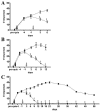
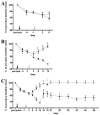
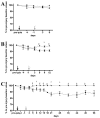
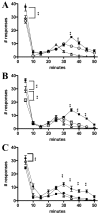





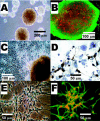
Similar articles
-
Transplants of adrenal medullary chromaffin cells reduce forelimb and hindlimb allodynia in a rodent model of chronic central pain after spinal cord hemisection injury.Exp Neurol. 2000 Aug;164(2):426-37. doi: 10.1006/exnr.2000.7439. Exp Neurol. 2000. PMID: 10915581
-
Subarachnoid transplant of a human neuronal cell line attenuates chronic allodynia and hyperalgesia after excitotoxic spinal cord injury in the rat.J Pain. 2007 Jan;8(1):33-50. doi: 10.1016/j.jpain.2006.05.013. J Pain. 2007. PMID: 17207742
-
Effects of adrenal medullary transplants on pain-related behaviors following excitotoxic spinal cord injury.Brain Res. 1998 Jul 6;798(1-2):83-92. doi: 10.1016/s0006-8993(98)00398-9. Brain Res. 1998. PMID: 9666085
-
Repairing the damaged spinal cord: a summary of our early success with embryonic stem cell transplantation and remyelination.Prog Brain Res. 2002;137:299-309. doi: 10.1016/s0079-6123(02)37023-7. Prog Brain Res. 2002. PMID: 12449097 Review.
-
Pain associated with spinal cord injury.Curr Opin Neurol. 1995 Dec;8(6):447-50. doi: 10.1097/00019052-199512000-00009. Curr Opin Neurol. 1995. PMID: 8845929 Review.
Cited by
-
Three-dimensional culture of dental pulp pluripotent-like stem cells (DPPSCs) enhances Nanog expression and provides a serum-free condition for exosome isolation.FASEB Bioadv. 2020 Jun 28;2(7):419-433. doi: 10.1096/fba.2020-00025. eCollection 2020 Jul. FASEB Bioadv. 2020. PMID: 32676582 Free PMC article.
-
Combined extrinsic and intrinsic manipulations exert complementary neuronal enrichment in embryonic rat neural precursor cultures: an in vitro and in vivo analysis.J Comp Neurol. 2009 Jul 1;515(1):56-71. doi: 10.1002/cne.22027. J Comp Neurol. 2009. PMID: 19399893 Free PMC article.
-
Simulated microgravity facilitates cell migration and neuroprotection after bone marrow stromal cell transplantation in spinal cord injury.Stem Cell Res Ther. 2013 Apr 1;4(2):35. doi: 10.1186/scrt184. Stem Cell Res Ther. 2013. PMID: 23548163 Free PMC article.
-
Predifferentiated GABAergic neural precursor transplants for alleviation of dysesthetic central pain following excitotoxic spinal cord injury.Front Physiol. 2012 May 31;3:167. doi: 10.3389/fphys.2012.00167. eCollection 2012. Front Physiol. 2012. PMID: 22754531 Free PMC article.
-
Intra-brain microinjection of human mesenchymal stem cells decreases allodynia in neuropathic mice.Cell Mol Life Sci. 2010 Feb;67(4):655-69. doi: 10.1007/s00018-009-0202-4. Epub 2009 Nov 24. Cell Mol Life Sci. 2010. PMID: 19937263 Free PMC article.
References
-
- France RD, Krishnan KRR. (1988) Chronic pain. American Psychiatric Press, Washington, DC, pp. xx, 561.
-
- Guttmann L. (1973) Spinal cord injuries: comprehensive management and research. Blackwell Scientific, Oxford, pp. xiii, 694 p.
-
- Windle WF. (1980) The spinal cord and its reaction to traumatic injury: anatomy-physiology-pharmacology-therapeutics. M. Dekker, New York, pp. xi, 384.
-
- Yezierski RP, Liu S, Ruenes GL, Kajander KJ, Brewer KL. Excitotoxic spinal cord injury: behavioral and morphological characteristics of a central pain model. Pain. 1998;75:141–55. - PubMed
-
- Siddall PJ, Loeser JD. Pain following spinal cord injury. Spinal Cord. 2001;39:63–73. - PubMed
Publication types
MeSH terms
LinkOut - more resources
Full Text Sources
Medical
